User & Deployment Stories
Explore SONiC’s impact through real-world user journeys and deployment insights. These stories highlight how organizations are adopting SONiC to solve complex networking challenges across industries.
Explore SONiC’s impact through real-world user journeys and deployment insights. These stories highlight how organizations are adopting SONiC to solve complex networking challenges across industries.
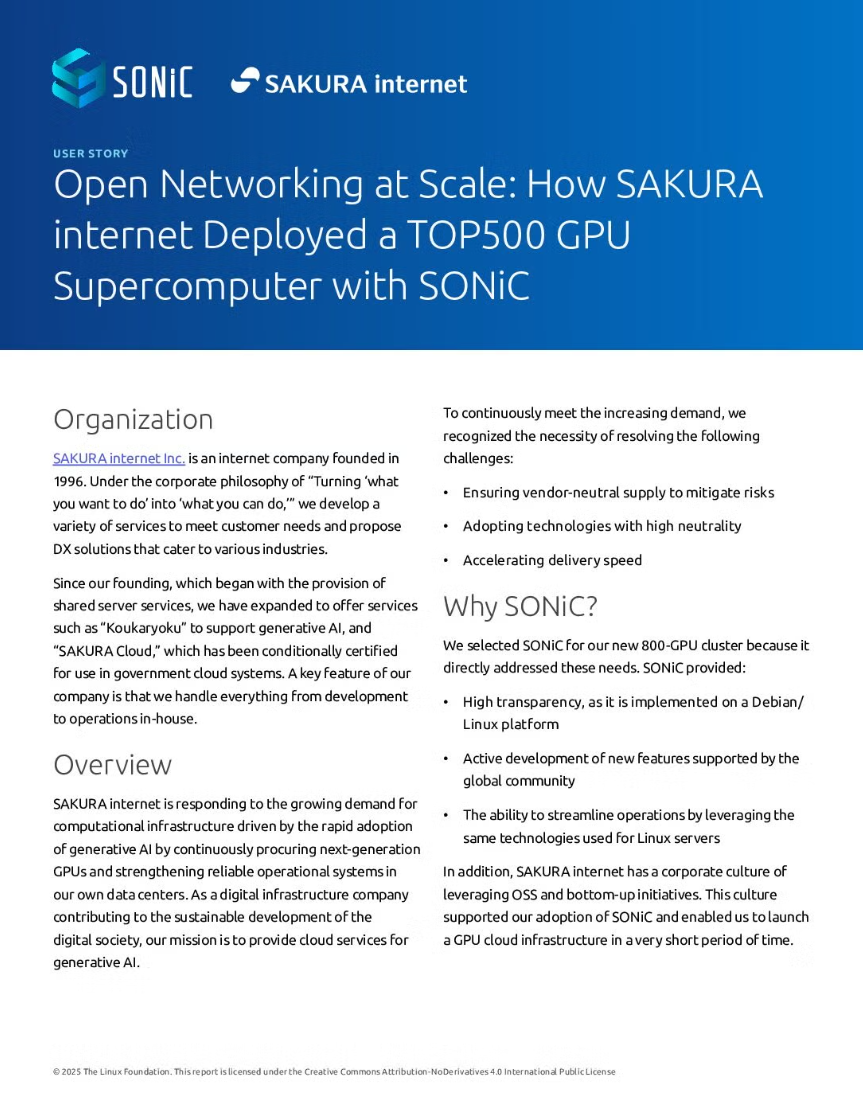
SAKURA Internet deployed an 800-GPU cloud infrastructure powered by SONiC, achieving 49th place in the June 2025 TOP500 ranking. Built entirely on open source technologies, the system demonstrates how SONiC can deliver world-class performance, scalability, and transparency for AI workloads. This case study showcases SAKURA Internet’s commitment to open, vendor-neutral networking and its role in advancing Japan’s digital infrastructure for generative AI.
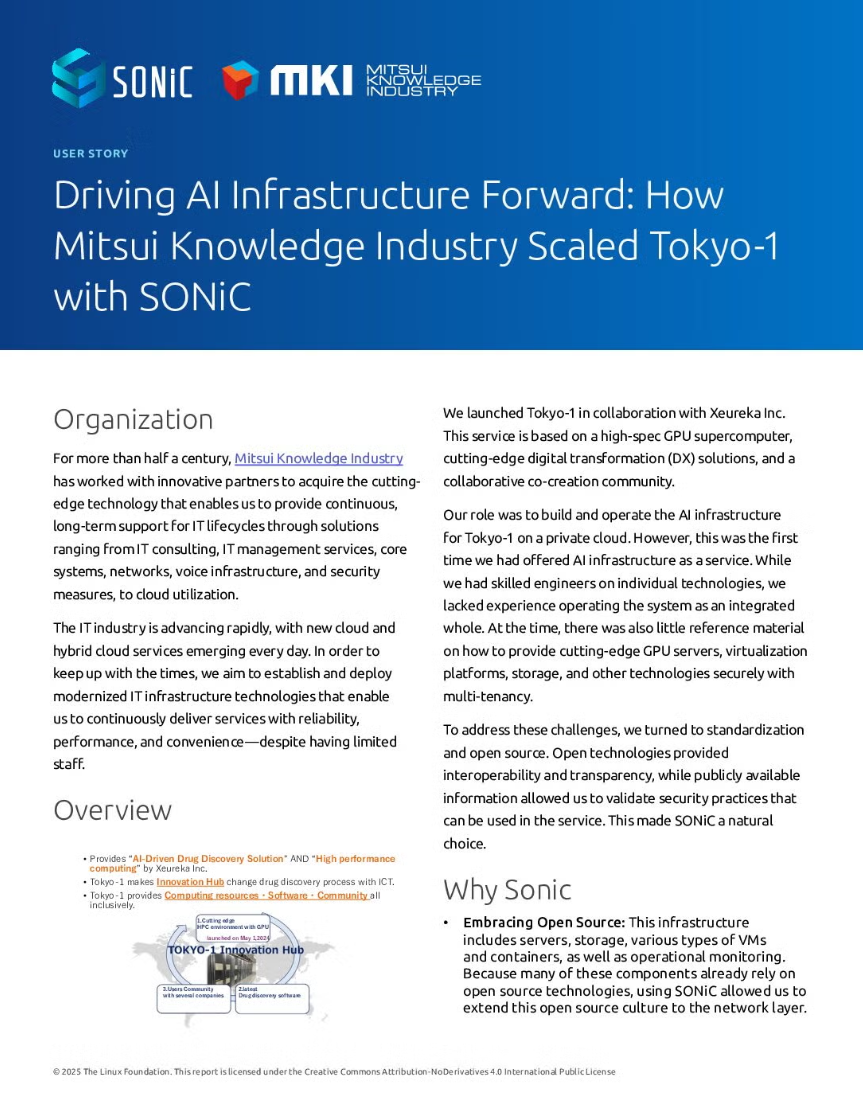
Mitsui Knowledge Industry (MKI) built and operates Tokyo-1 , a next-generation AI supercomputing service designed to deliver high-performance, secure, and flexible infrastructure. To power its core network fabric, MKI adopted community SONiC, enabling full lifecycle control with vendor-agnostic hardware, reducing operational costs through automation, and enhancing efficiency in multi-tenant GPU environments. This case study highlights how SONiC is helping MKI accelerate digital transformation and advance AI-driven innovation across Japan’s research and enterprise sectors.
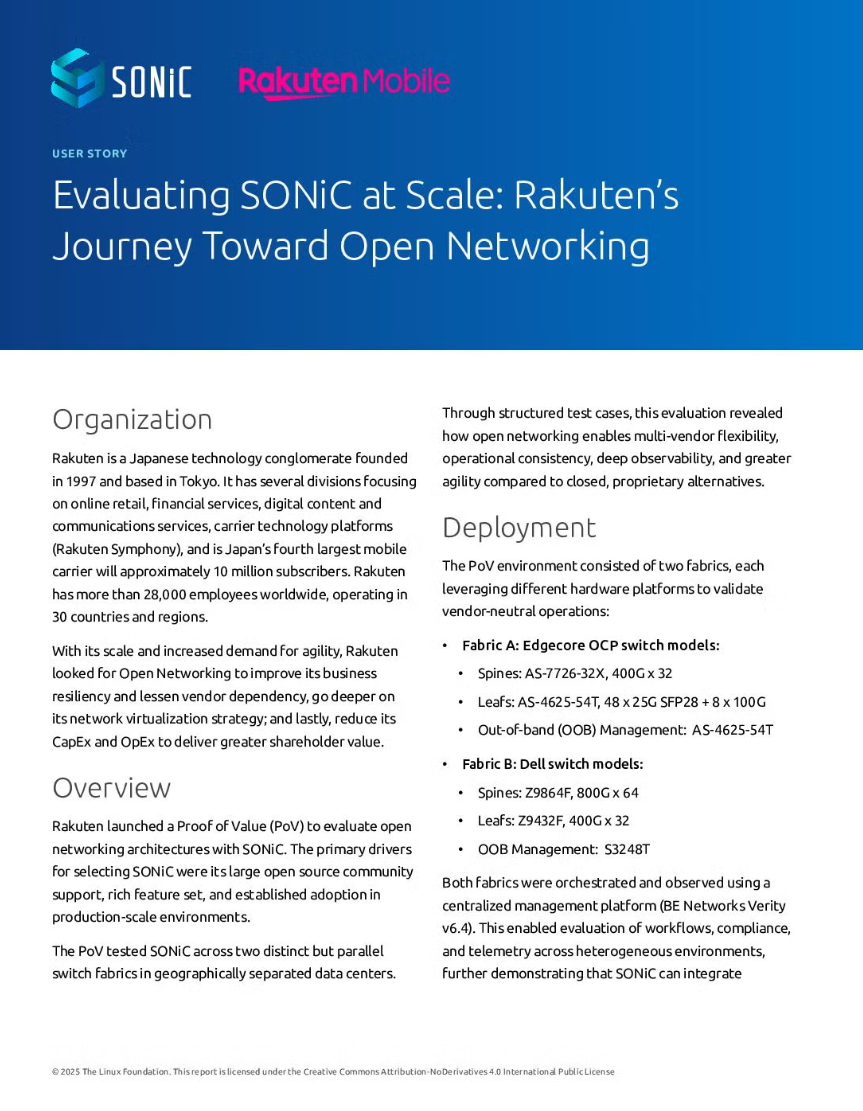
Rakuten, Japan’s leading technology conglomerate, conducted a Proof of Value (PoV) to evaluate SONiC across geographically distributed data centers. The results demonstrated significant cost savings, improved operational consistency, and flexibility across diverse hardware platforms. This case study highlights Rakuten’s journey toward scalable, future-ready infrastructure powered by open networking.
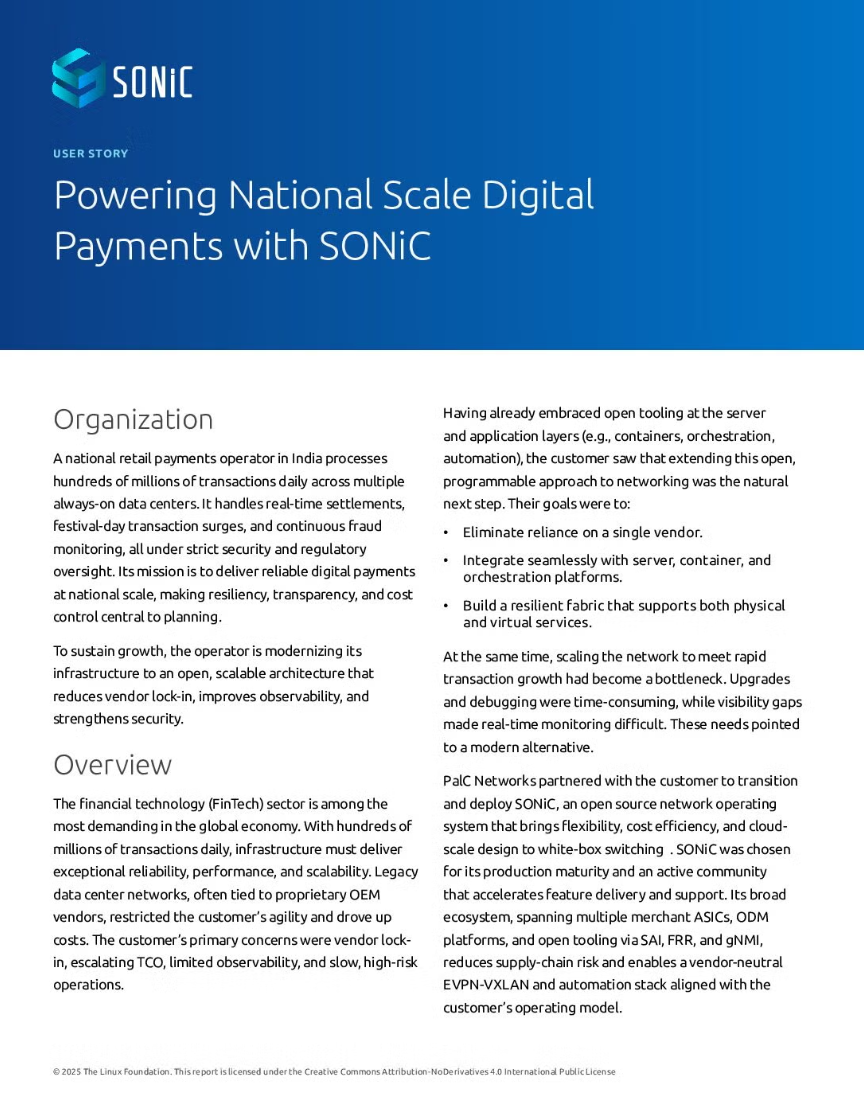
A national retail payments operator in India partnered with PalC Networks to deploy SONiC across its data centers, powering hundreds of millions of daily transactions. The open, vendor-neutral architecture improved agility, observability, and resiliency while reducing TCO by up to 40%. This case study highlights how SONiC enables secure, scalable digital payment infrastructure at national scale.
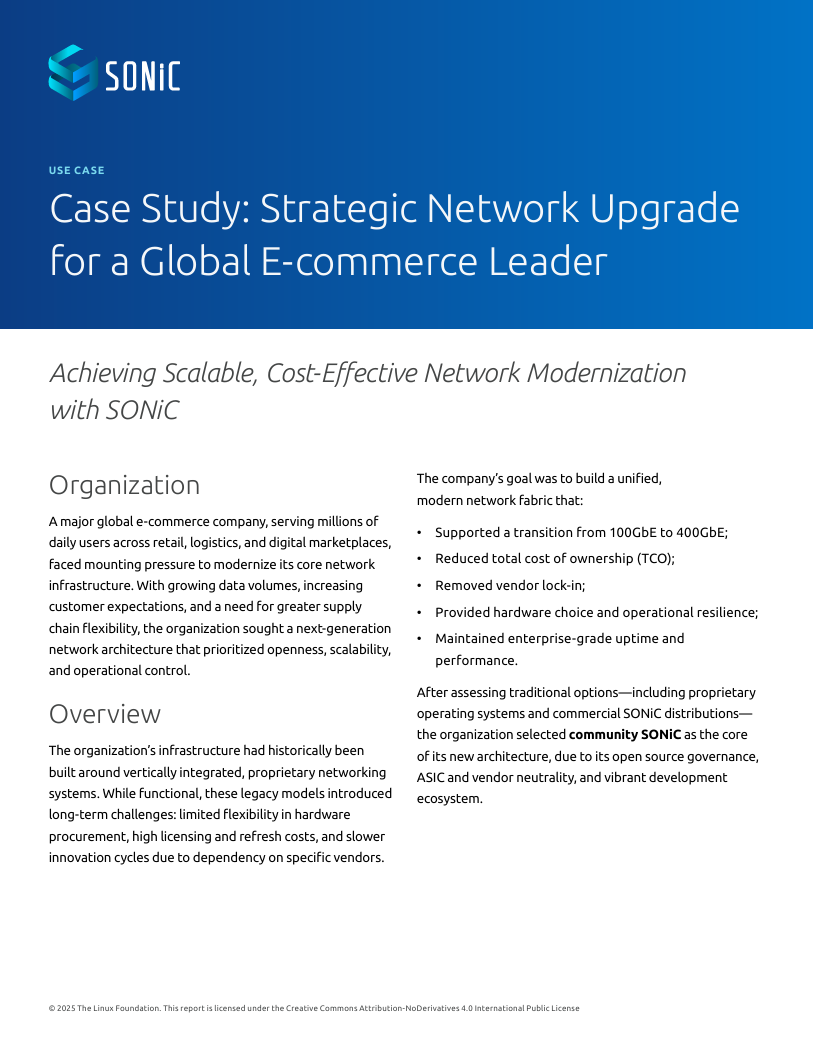
A global e-commerce leader modernized its core infrastructure by deploying SONiC across a multi-vendor environment, enabling a smooth transition from 100GbE to 400GbE. By adopting community SONiC, the organization reduced costs by 30%, improved supply chain resilience, and gained full operational control through CI/CD automation and observability tooling. This case study shows how SONiC powers flexible, high-performance networks for fast-growing digital businesses.
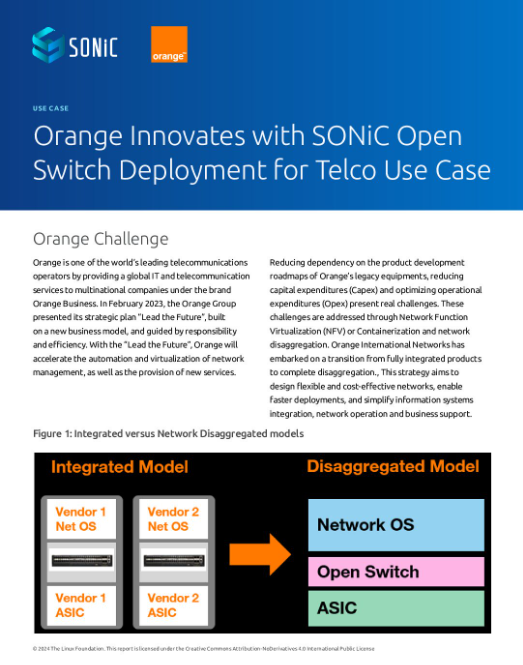
Orange, a global telecommunications leader, documents the first telco use case of disaggregated SONiC switches in production. By using SONiC, Orange harnesses SONiC’s benefits of flexibility, cost efficiency, and open source innovation for future-ready network solutions. This case study exemplifies how Orange is setting new standards in telecommunications, showcasing the tangible benefits of open, software-driven networking solutions.
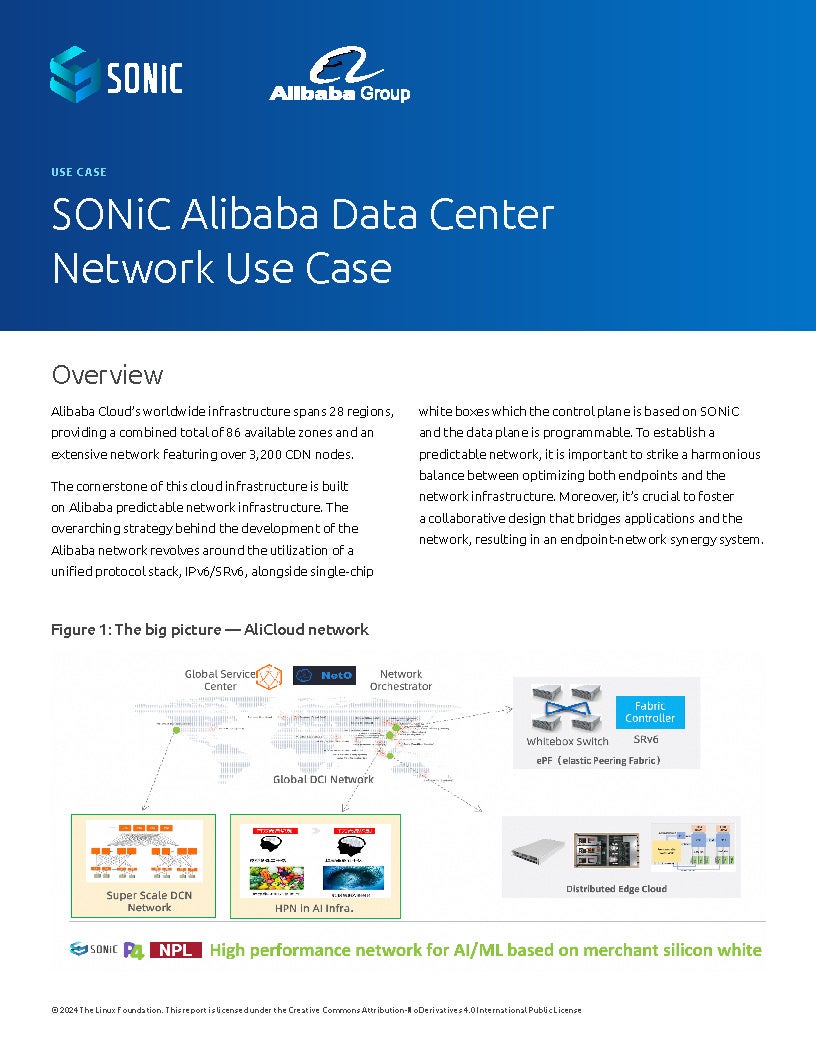
This case study highlights Alibaba Cloud’s transformation of its data center infrastructure using SONiC, an open and mature network operating system. Explore how Alibaba achieved substantial cost savings, enhanced network quality, and accelerated innovation across both AI and standard cloud compute/storage architectures, with a commitment to ongoing collaboration within the SONiC community for continuous advancements in network technologies.
Dive into technical use cases that showcase how SONiC enables specific architectures, optimizations, or industry applications. These examples focus on the “how” — from network design to feature application — across various scenarios.
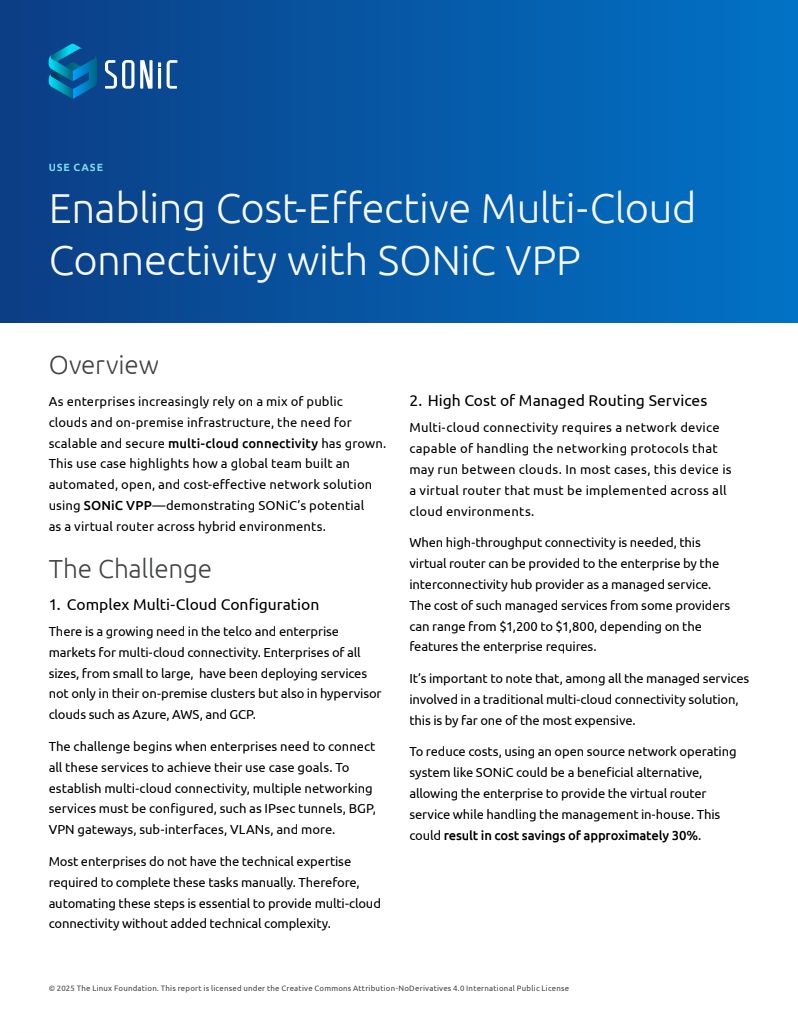
This use case demonstrates how a global team enabled scalable, automated, and secure multi-cloud connectivity using SONiC with Vector Packet Processing (VPP). By replacing expensive managed routing services with a virtual router built on SONiC, the team reduced costs by up to 30% while simplifying complex network configurations across on-prem and public cloud environments like AWS and Azure.